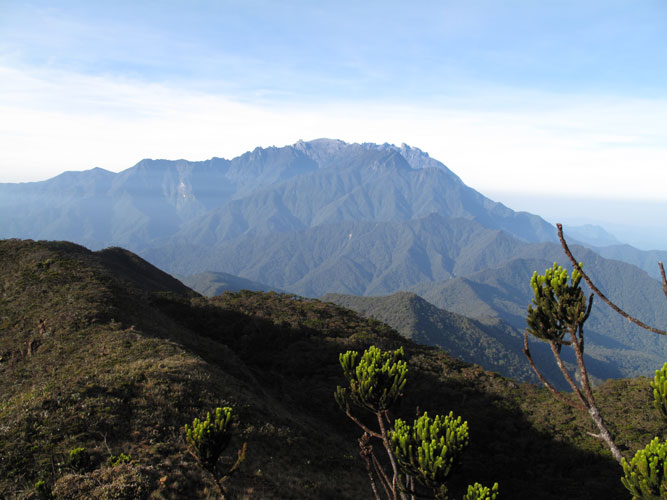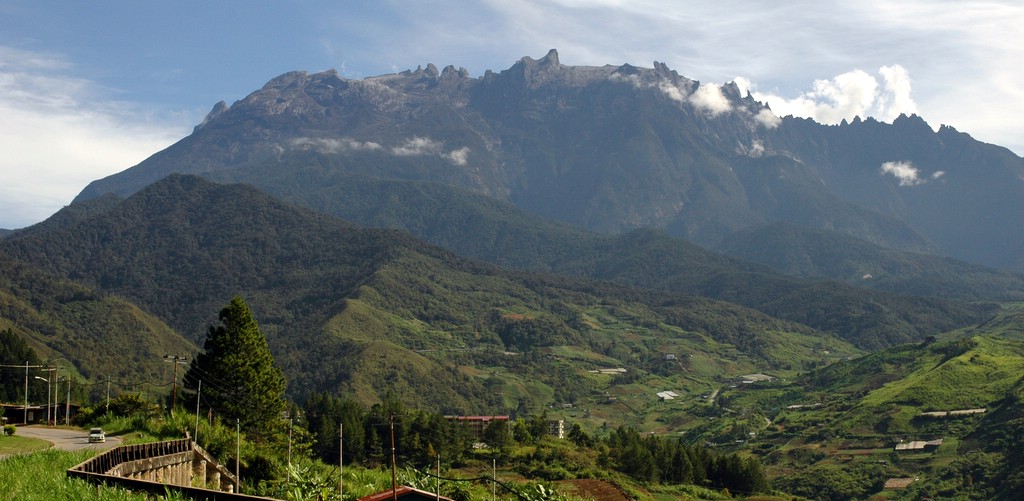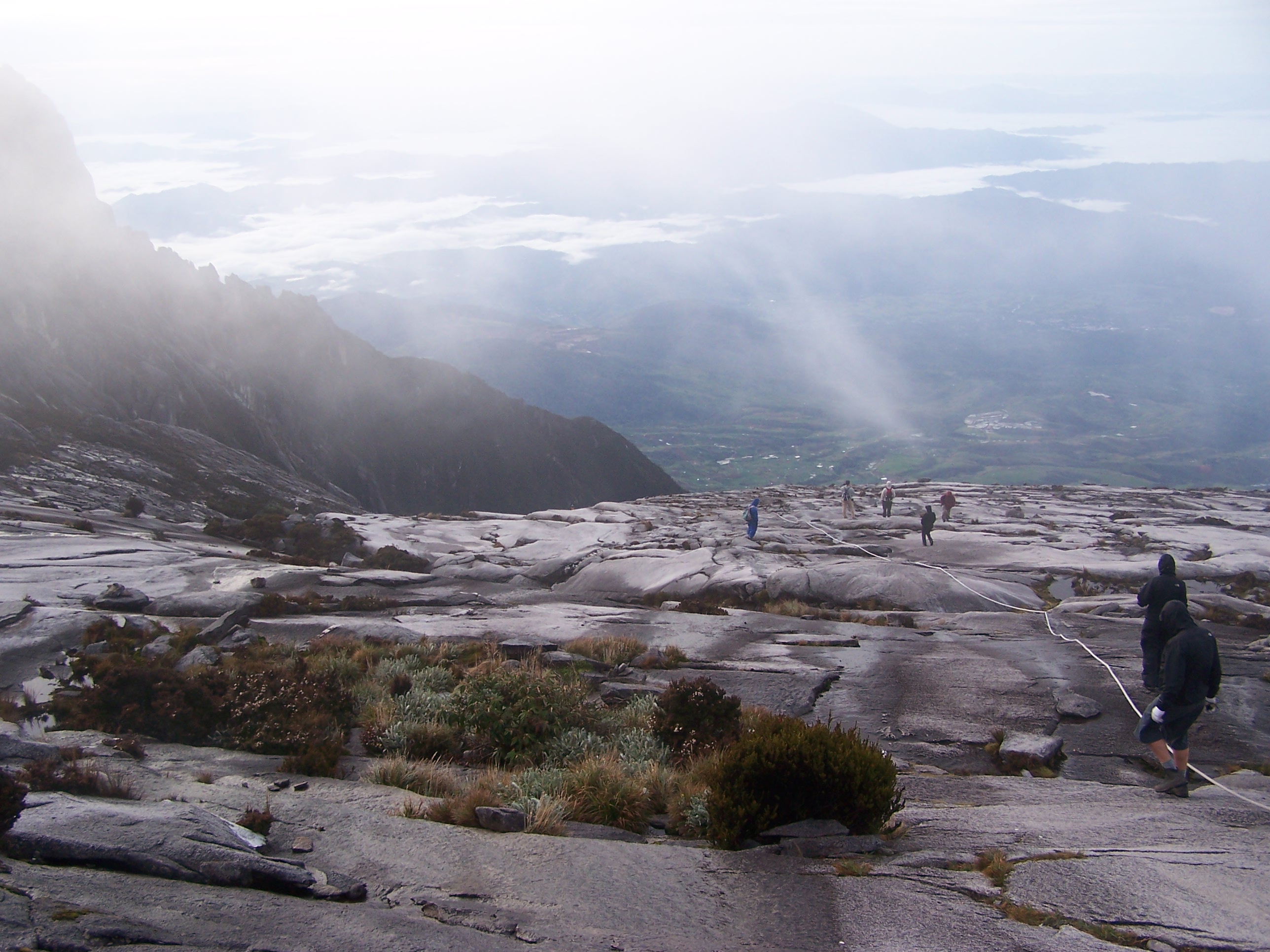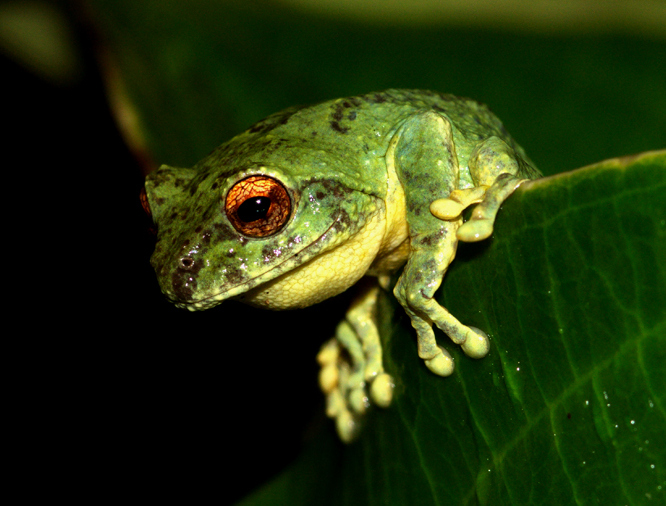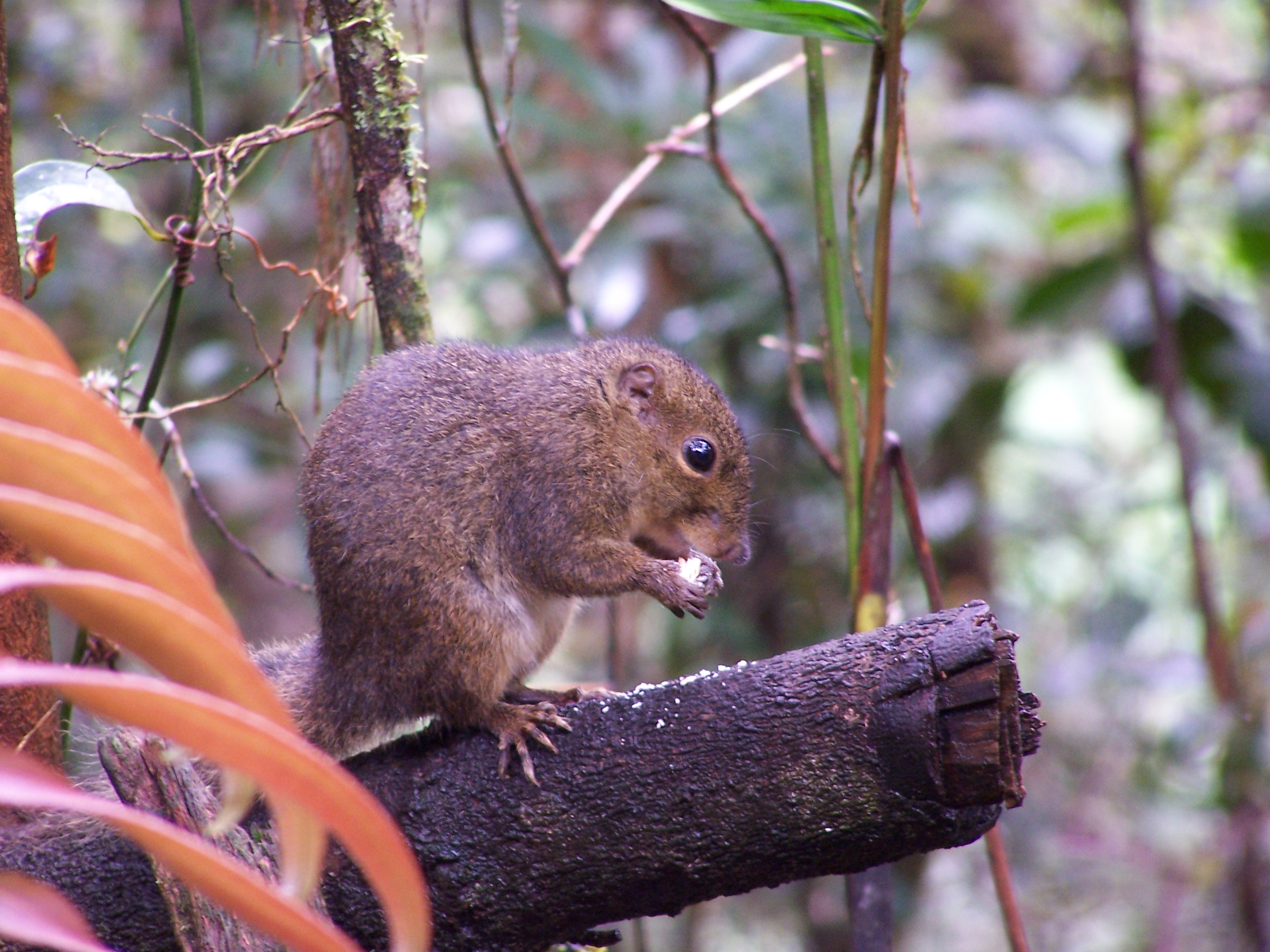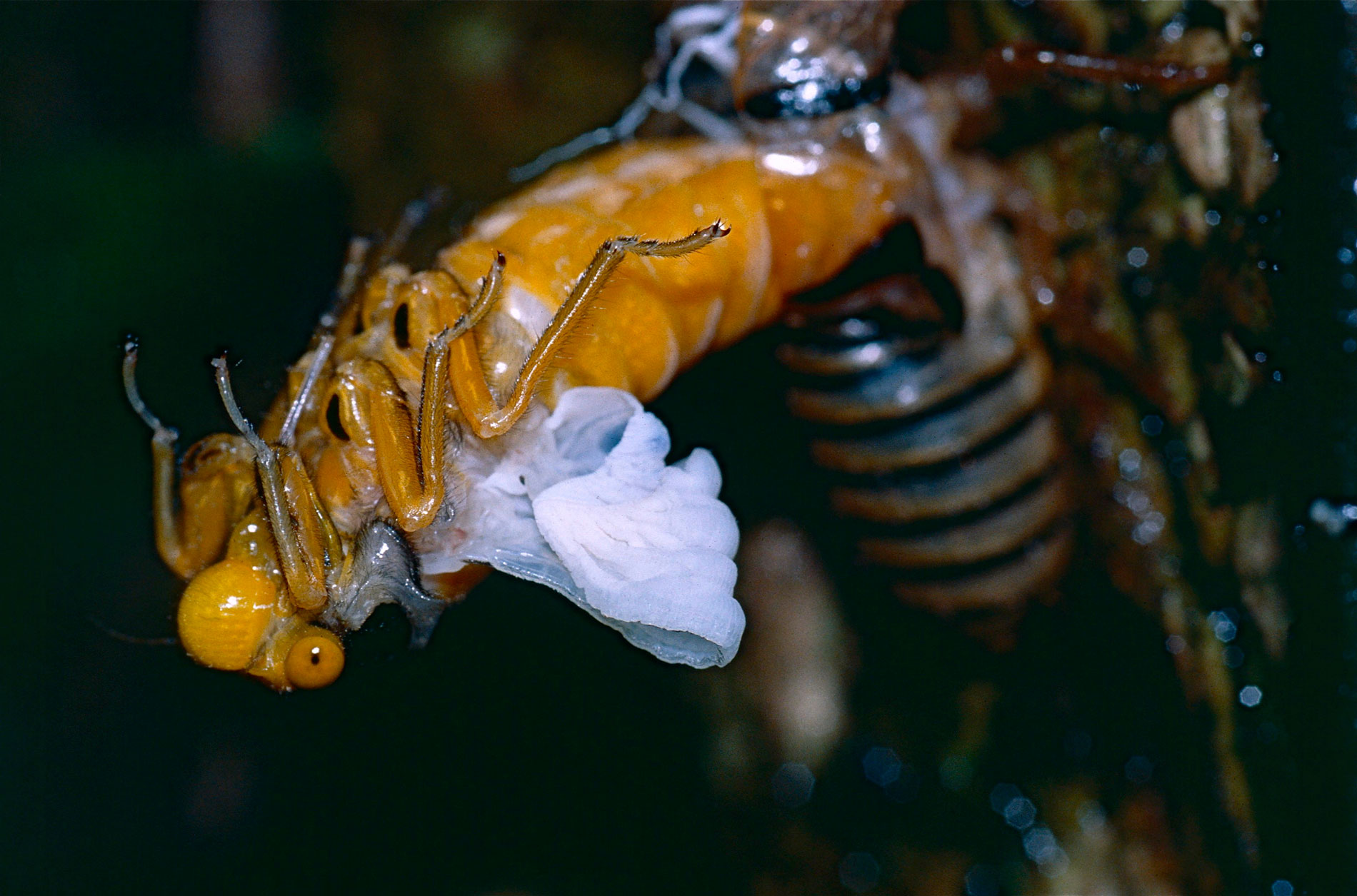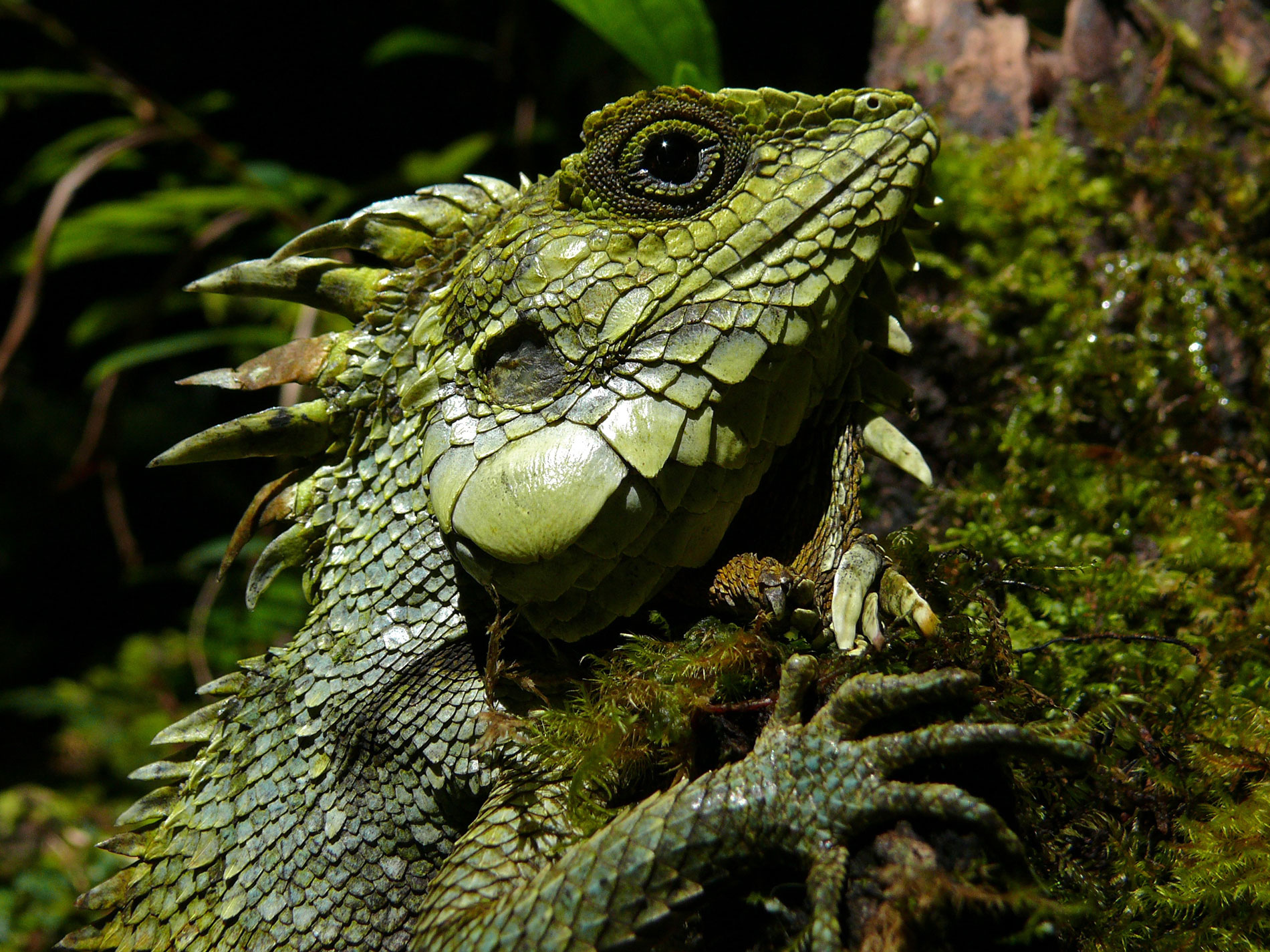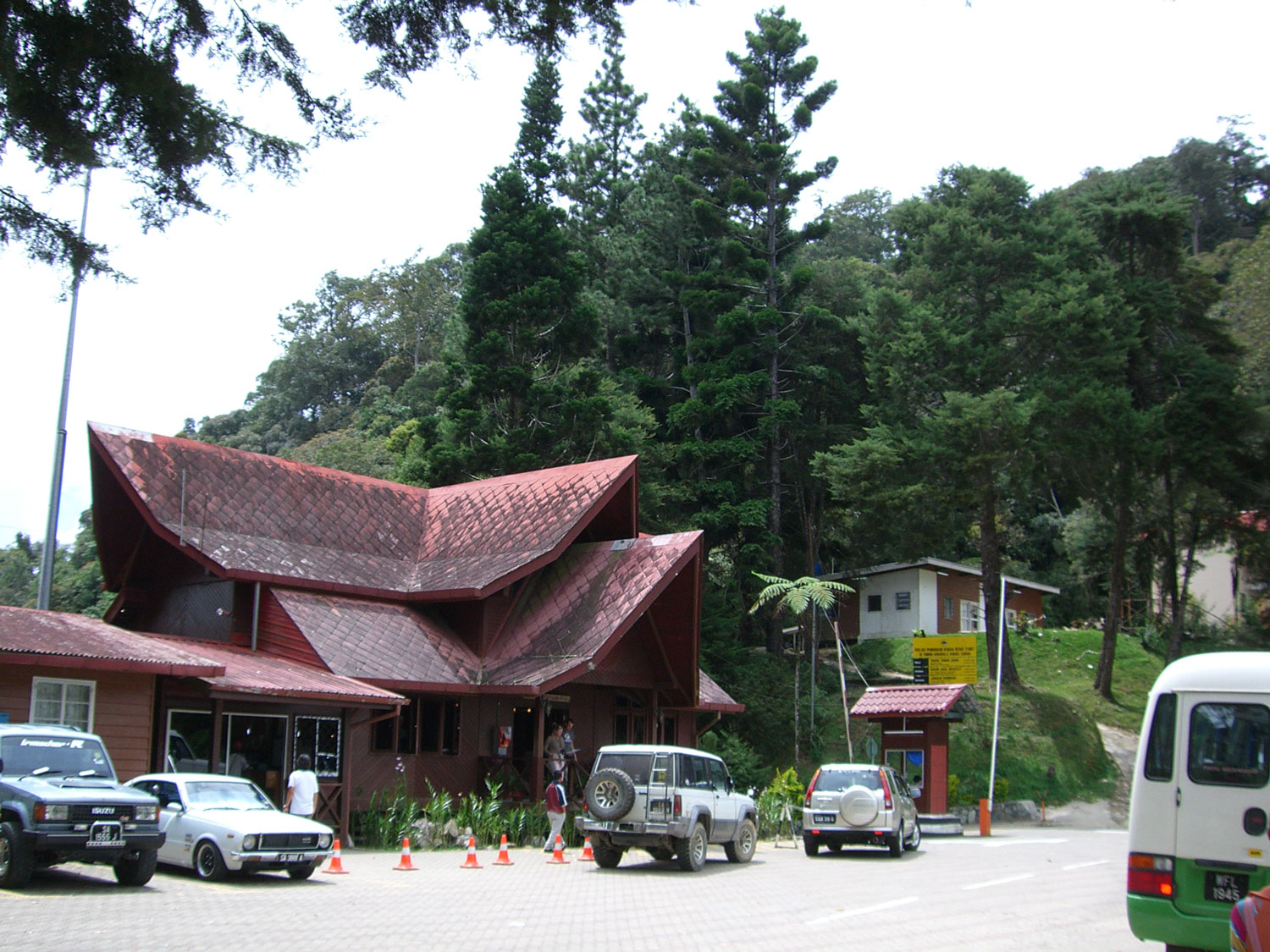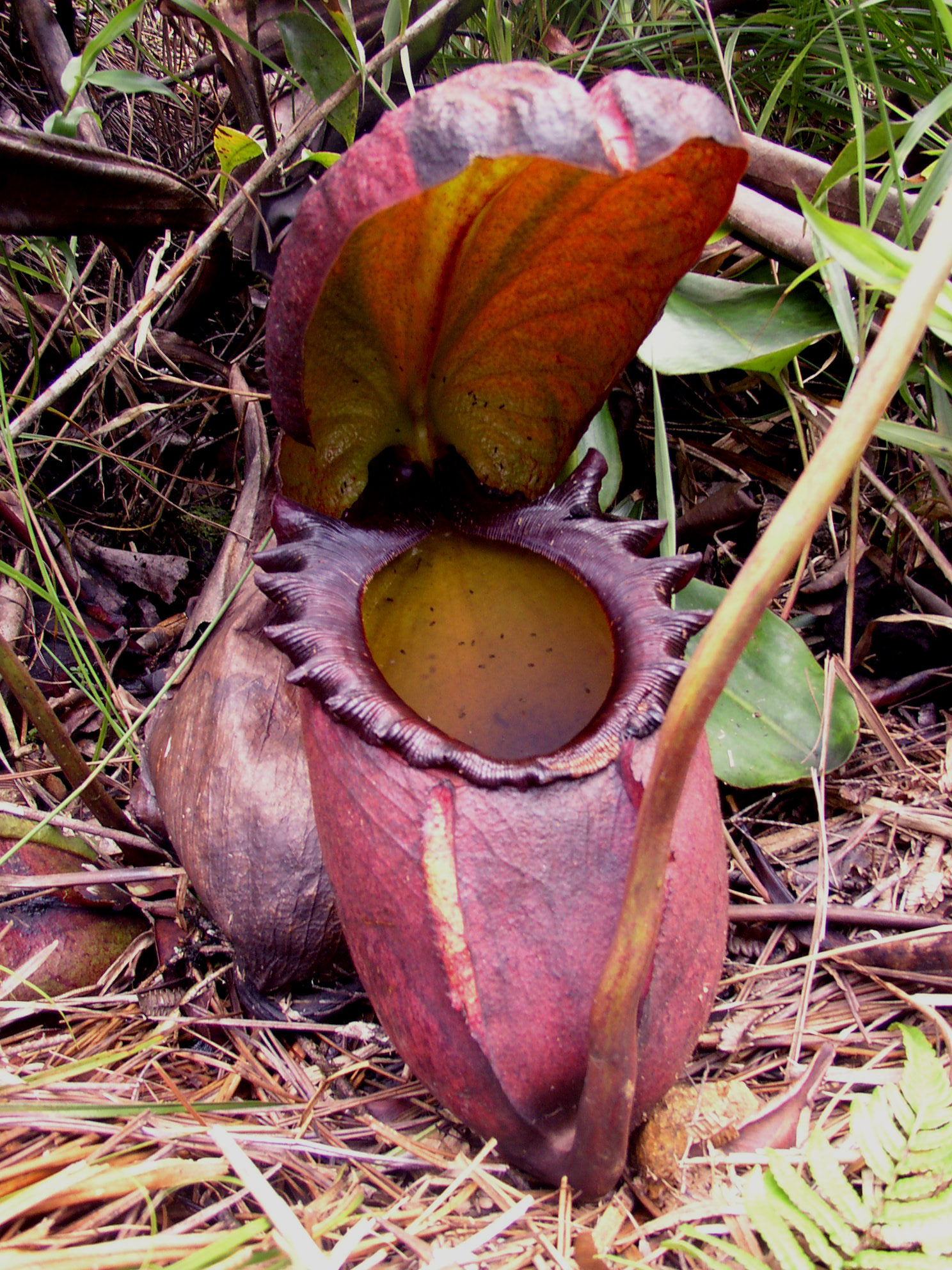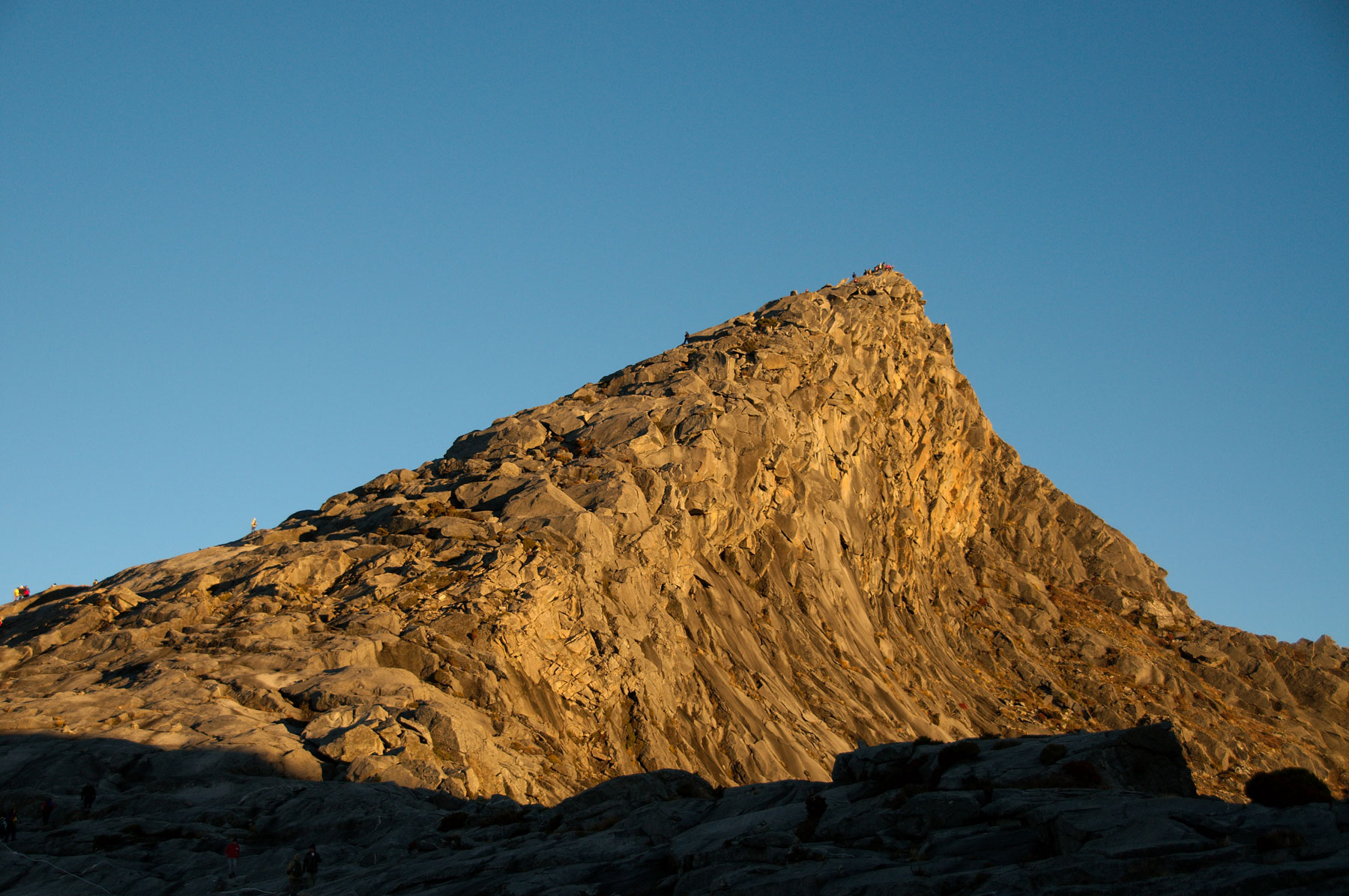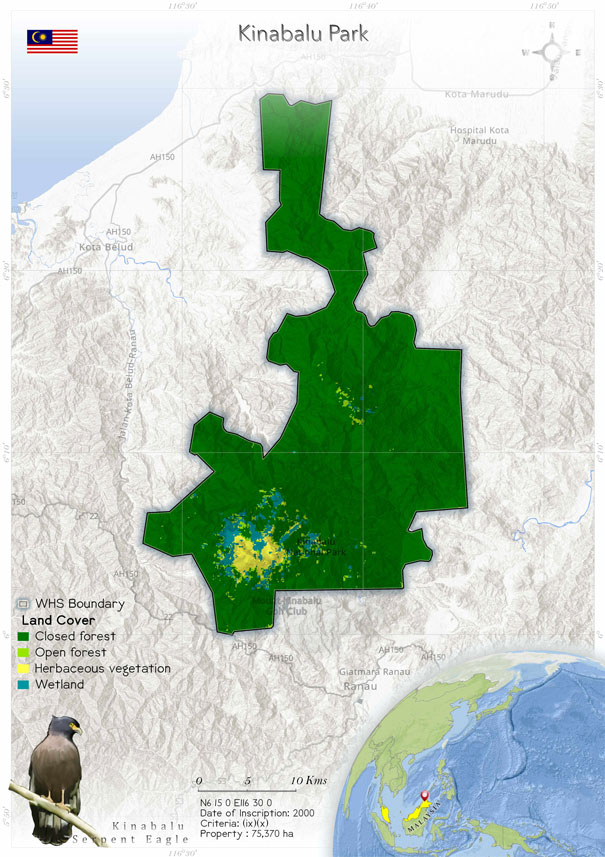
Kinabalu Park (1012)
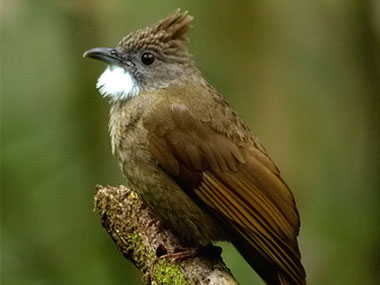 Kinabalu Park, Malaysia, was designated a World Heritage Site in 2000 due to its spectacular and outstanding values. The park is located on Mount Kinabalu and its secondary mountain ranges. The park holds a large variety of plant and animal species that are entirely endemic to Kinabalu, most notably, Nepenthes rajah (carnivorous plant species) and Paphiopedilum rothschildianum (rare orchid species). However, a particular species of dandelion has invaded the area during the past few years, affecting the endemic species of the park. Fire outbreaks in the forest caused by climate change and by anthropogenic activities are considered the greatest. There have been issues of encroachment in the buffer zone. As indigenous communities slowly increase the agricultural land by depleting the forest cover
Kinabalu Park, Malaysia, was designated a World Heritage Site in 2000 due to its spectacular and outstanding values. The park is located on Mount Kinabalu and its secondary mountain ranges. The park holds a large variety of plant and animal species that are entirely endemic to Kinabalu, most notably, Nepenthes rajah (carnivorous plant species) and Paphiopedilum rothschildianum (rare orchid species). However, a particular species of dandelion has invaded the area during the past few years, affecting the endemic species of the park. Fire outbreaks in the forest caused by climate change and by anthropogenic activities are considered the greatest. There have been issues of encroachment in the buffer zone. As indigenous communities slowly increase the agricultural land by depleting the forest cover
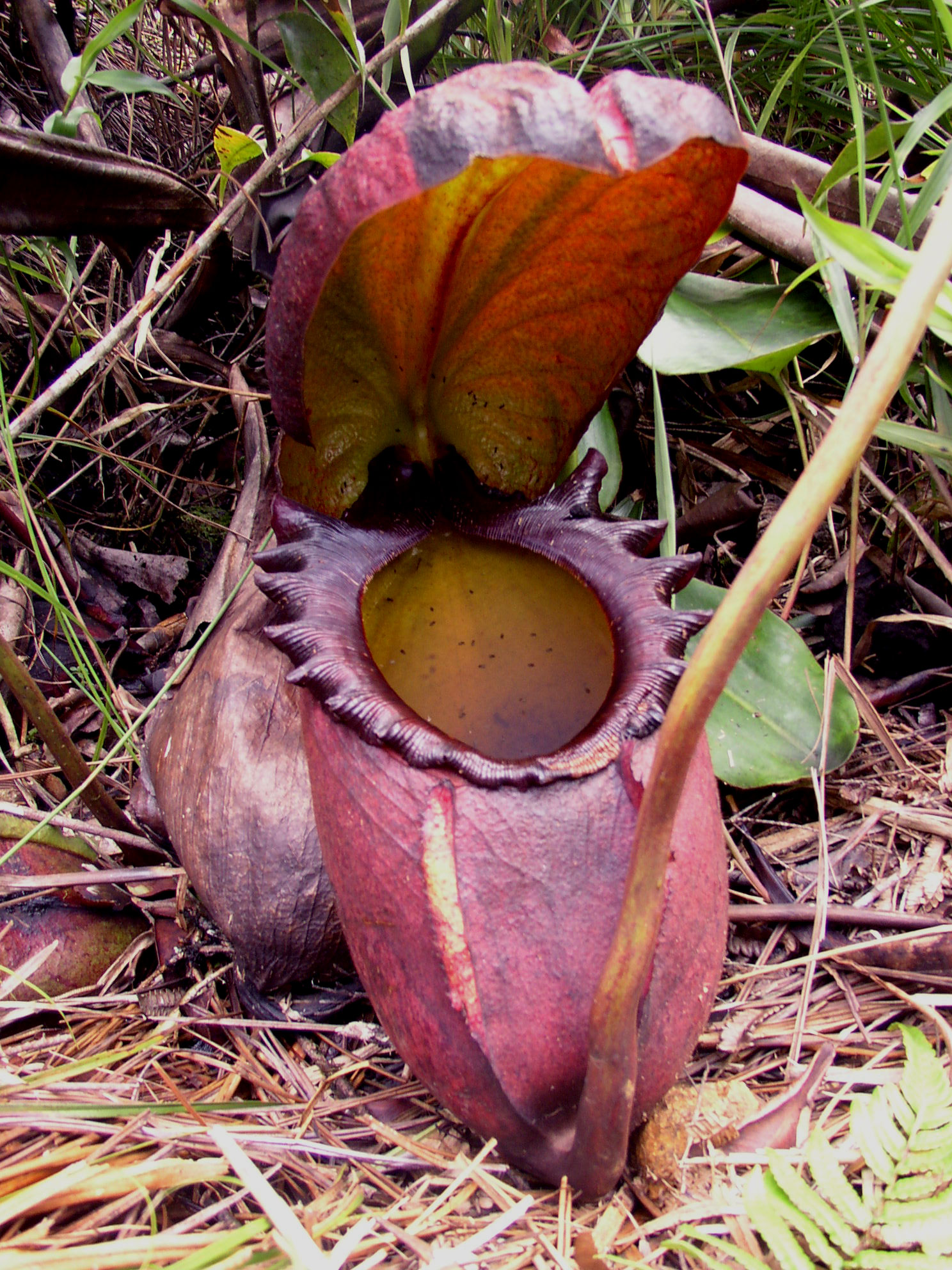 One of Malaysia's first national parks, designated in 1964, Kinabalu Park is located at the northern end of Borneo Island, in the State of Sabah (UNESCO whc.unesco.org). The park has an extent of 754 km2 (Liew1996) and is situated on Mount Kinabalu, which rises to a height of 4101 m (Whitehead 1893; Luping et al. 1978; Frahm et al. 1990; Wong & Phillipps 1996). Mount Kinabalu is primarily covered with three types of geological substrates, Quaternary and Tertiary sedimentary rocks and ultrabasic (serpentine) rock(Jacobson 1978). Mount Kinabalu has a humid tropical climate The mean annual rainfall is 2380 mm, and the mean saturation deficit of the air is 0.23 kPa at this elevation. The habitats range from tropical rainforests at the base to a rocky alpine mountain zone at the peak of Mount Kinabalu (Akiyama et al. 2001). There are four climatic zones: low land dipterocarp forest (35%), montane forests (37%), coniferous forests, alpine meadow cover and stunted bushes, in the summit zone (UNESCO whc.unesco.org). The mountain is also well known to be the home of many carnivorous plant and orchid species, particularly Nepenthes rajah and Paphiopedilum rothschildianum (Rothschild's slipper orchid). Kinabalu National Park is widely acknowledged to be a significant biodiversity hotspot with the highest mountain in Southeast Asia (Backhaus 2005).
One interesting fact about Kinabalu Park is that it has been designated as the “Centre of Plant Diversity for Southeast Asia” for its exceptionally rich floral diversity(UNESCO whc.unesco.org). Myrtaceae and Fagaceaedominate throughout the three geological substrates. On the lower slopes of the Quaternary and Tertiary sedimentary rocks, Lauraceae, Sapotaceae, Meliaceae and Myristicaceae are abundant (Takyu et al. 2002).
One of Malaysia's first national parks, designated in 1964, Kinabalu Park is located at the northern end of Borneo Island, in the State of Sabah (UNESCO whc.unesco.org). The park has an extent of 754 km2 (Liew1996) and is situated on Mount Kinabalu, which rises to a height of 4101 m (Whitehead 1893; Luping et al. 1978; Frahm et al. 1990; Wong & Phillipps 1996). Mount Kinabalu is primarily covered with three types of geological substrates, Quaternary and Tertiary sedimentary rocks and ultrabasic (serpentine) rock(Jacobson 1978). Mount Kinabalu has a humid tropical climate The mean annual rainfall is 2380 mm, and the mean saturation deficit of the air is 0.23 kPa at this elevation. The habitats range from tropical rainforests at the base to a rocky alpine mountain zone at the peak of Mount Kinabalu (Akiyama et al. 2001). There are four climatic zones: low land dipterocarp forest (35%), montane forests (37%), coniferous forests, alpine meadow cover and stunted bushes, in the summit zone (UNESCO whc.unesco.org). The mountain is also well known to be the home of many carnivorous plant and orchid species, particularly Nepenthes rajah and Paphiopedilum rothschildianum (Rothschild's slipper orchid). Kinabalu National Park is widely acknowledged to be a significant biodiversity hotspot with the highest mountain in Southeast Asia (Backhaus 2005).
One interesting fact about Kinabalu Park is that it has been designated as the “Centre of Plant Diversity for Southeast Asia” for its exceptionally rich floral diversity(UNESCO whc.unesco.org). Myrtaceae and Fagaceaedominate throughout the three geological substrates. On the lower slopes of the Quaternary and Tertiary sedimentary rocks, Lauraceae, Sapotaceae, Meliaceae and Myristicaceae are abundant (Takyu et al. 2002).
Criterion (ix)
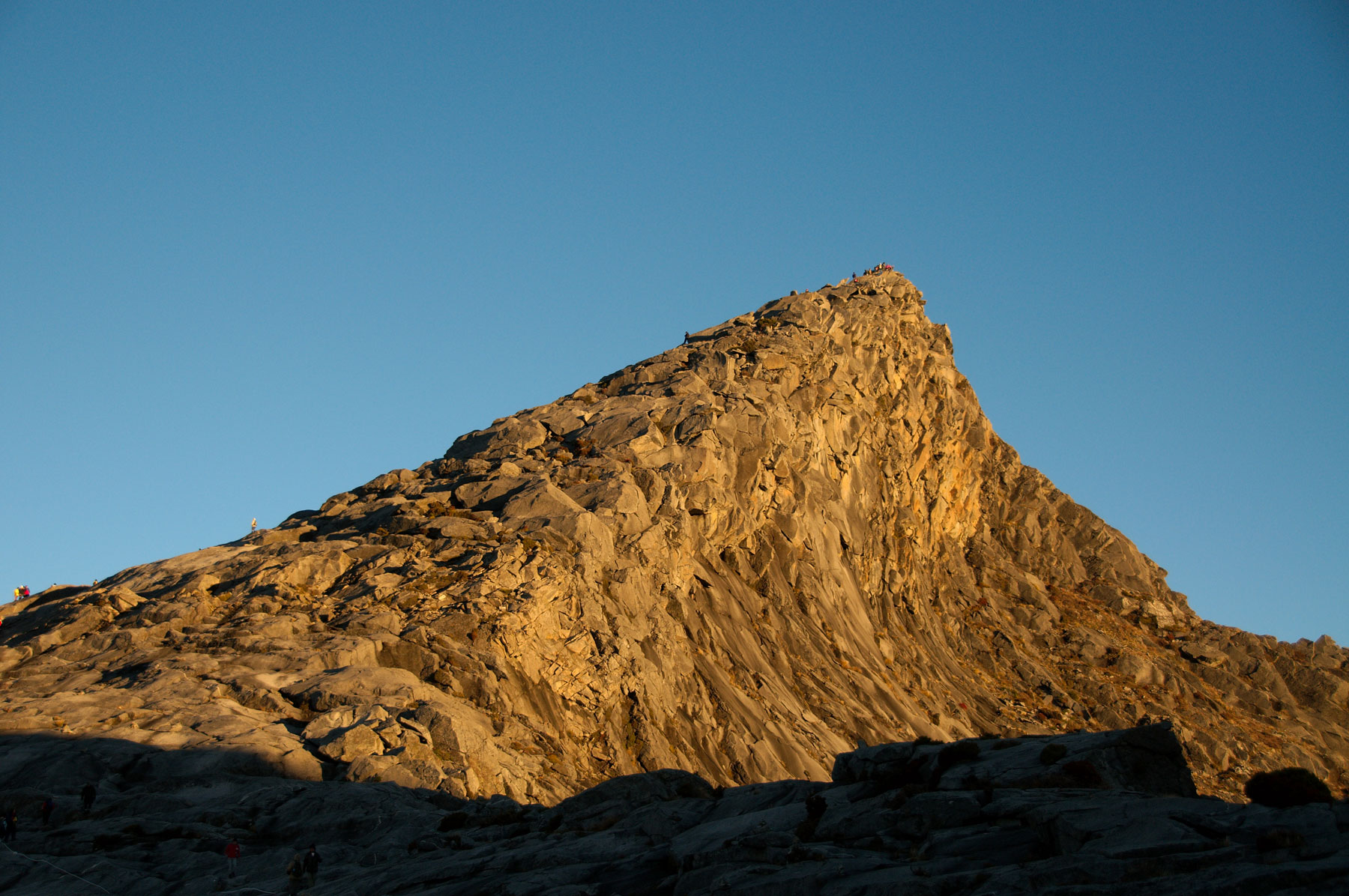 Kinabalu Park has an exceptional array of naturally functioning ecosystems. A number of processes actively provide ideal conditions for the diverse biota, high endemism and rapid evolutionary rates. Several factors combine to influence these processes; (1) the great altitudinal and climatic gradient from tropical forest to alpine conditions; (2) steeply dissected topography causing effective geographical isolation over short distances; (3) the diverse geology with many localized edaphic conditions, particularly the ultramafic substrates; (4) the frequent climate oscillations influenced by El Niño events; and (5) geological history of the Malay archipelago and proximity to the much older Crocker Range.
Kinabalu Park has an exceptional array of naturally functioning ecosystems. A number of processes actively provide ideal conditions for the diverse biota, high endemism and rapid evolutionary rates. Several factors combine to influence these processes; (1) the great altitudinal and climatic gradient from tropical forest to alpine conditions; (2) steeply dissected topography causing effective geographical isolation over short distances; (3) the diverse geology with many localized edaphic conditions, particularly the ultramafic substrates; (4) the frequent climate oscillations influenced by El Niño events; and (5) geological history of the Malay archipelago and proximity to the much older Crocker Range.
Criterion (x)
Floristically species-rich and identified as a globally important Centre of Plant Endemism, Kinabalu Park contains an estimated 5,000-6,000 vascular plant species including representatives from more than half the families of all flowering plants. The presence of 1,000 orchid species, 78 species of Ficus, and 60 species of ferns is indicative of the botanical richness of the property. The variety of Kinabalu’s habitats includes six vegetation zones, ranging from lowland rainforest to alpine scrub at 4,095m. Faunal diversity is also high and the property is an important center for endemism. The majority of Borneo’s mammals, birds, amphibians and invertebrates (many threatened and vulnerable) are known to occur in the park including; 90 species of lowland mammal, 22 mammal species in the montane zone and 326 bird species.
Status
 Spectacular Kinabalu Park, has faced adverse threats that are mainly anthropologenic. Despite acknowledging the "Community Use Zones", local and indigenous people have continued to log the forest cover to increase the extent of agricultural land. This issue was addressed in the 2002 periodic reporting by UNESCO and mentioned in the IUCN Heritage Outlook report. The encroachment of the national property went out control with contact logging and other agricultural practices. So the State Party was informed to consider the establishment of a formal buffer zone that drew boundaries for specified land use restrictions.
The deforestation led to other concerns such as erosion and land degradation, due to which the endemic and exotic plant species suffered the impact. Another potential threat that surfaced was the invasion of an alien species of dandelion during the years 1989–99. It is still seen as a threat as the infestation has spread to a large part of Kinabalu Park.
Another possible threat was introduced in the park naturally, drought. Naturally caused El Nino droughts brought along high risks of forest fires, which had a severe impact on the survival of the animal and plant species of the heritage site (IUCN World Heritage Outlook 2020). According to the site's assessment by the IUCN in 2020, Kinabalu Park was "good with some concerns" due to the consistent threat of the drought and fire incidents in the core zone of the park. This has prompted the authorities to implement effective management measures to protect the park's outstanding universal values in future.
Spectacular Kinabalu Park, has faced adverse threats that are mainly anthropologenic. Despite acknowledging the "Community Use Zones", local and indigenous people have continued to log the forest cover to increase the extent of agricultural land. This issue was addressed in the 2002 periodic reporting by UNESCO and mentioned in the IUCN Heritage Outlook report. The encroachment of the national property went out control with contact logging and other agricultural practices. So the State Party was informed to consider the establishment of a formal buffer zone that drew boundaries for specified land use restrictions.
The deforestation led to other concerns such as erosion and land degradation, due to which the endemic and exotic plant species suffered the impact. Another potential threat that surfaced was the invasion of an alien species of dandelion during the years 1989–99. It is still seen as a threat as the infestation has spread to a large part of Kinabalu Park.
Another possible threat was introduced in the park naturally, drought. Naturally caused El Nino droughts brought along high risks of forest fires, which had a severe impact on the survival of the animal and plant species of the heritage site (IUCN World Heritage Outlook 2020). According to the site's assessment by the IUCN in 2020, Kinabalu Park was "good with some concerns" due to the consistent threat of the drought and fire incidents in the core zone of the park. This has prompted the authorities to implement effective management measures to protect the park's outstanding universal values in future.
